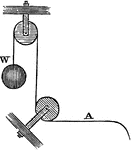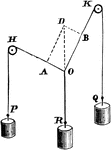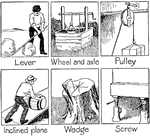
Simple Machines
Illustrations showing the six mechanical powers: lever, wheel and axle, pulley, inclined plane, wedge,…
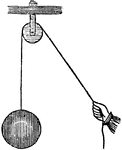
Simple Pulley
"...represents a simple pulley, with a single fixed wheel. In other forms of the machine, the wheel…

Single Movable Pulley
"In the single moveable pulley, the same rope passes from the fixed point, A, to the power, P. It is…

Smoke-Jack Used for Roasting Meat
"A machine for turning a roasting-spit by means of a fly-wheel or -wheels, set in motion by the current…
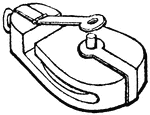
Snatch-block
"A block used in ships, having an opening in one side to receive the bight of a rope, chiefly used for…
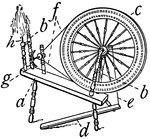
Spinning Wheel for Flax
"A machine for spinning flax into threads by hand. It consists of a wheel, band, and spindle, and is…

Spinning Wheel for Wool
"A machine for spinning flax into threads by hand. It consists of a wheel, band, and spindle, and is…
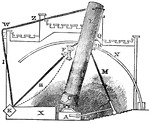
Telescope
"The following description of a section of Lord Rosse's telescope, though not so perfect as could be…

Wheel and Axle
"To change the direction, it is only necessary that the rope by which the weight is to be raised, should…
Wheel Barometer
"The whole length of the tube of the wheel barometer, from C to A, is 34 or 35 inches, and it is filled…
White's Pulley
"In order that the successive wheels should revolve in the same time, and their circumfrences should…

White's Pulley
"Features six movable pulleys aligned on the same axis. This pulley was invented to reduce the friction…
